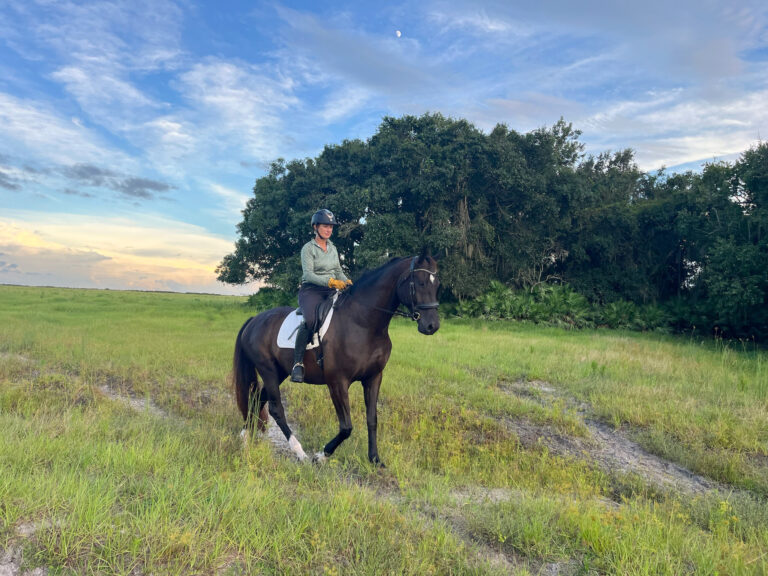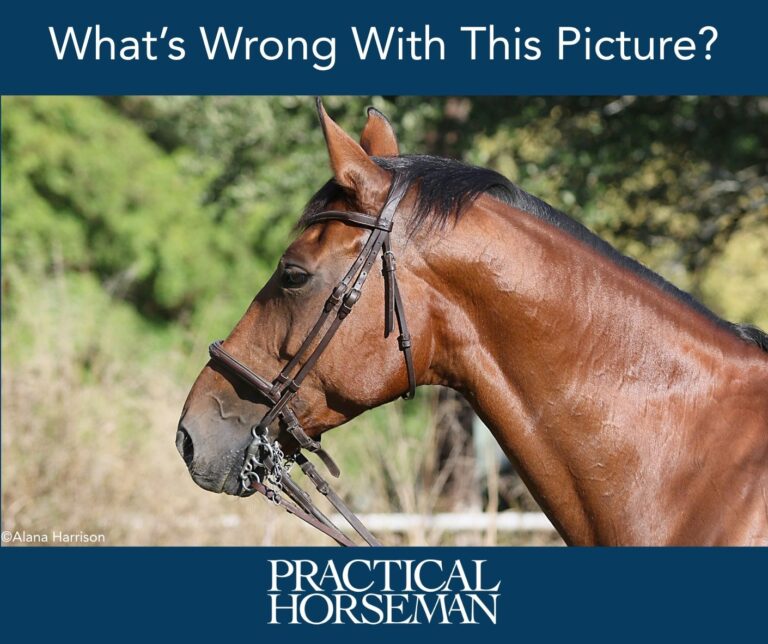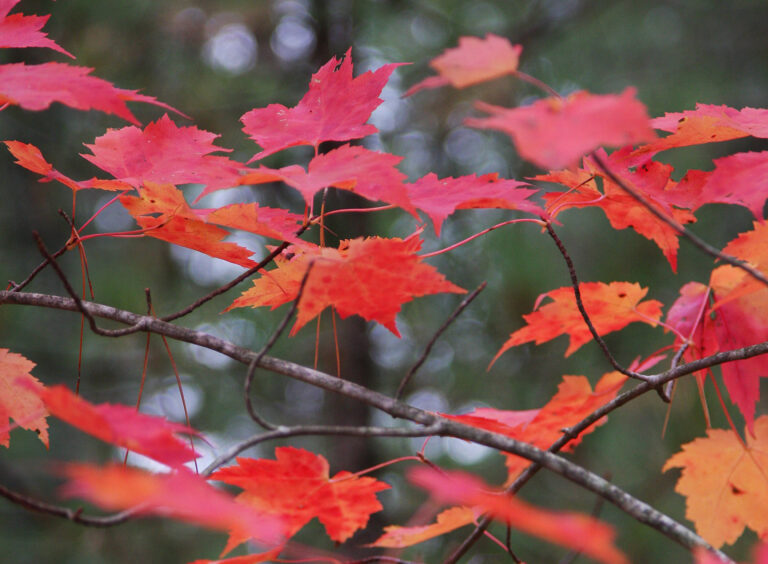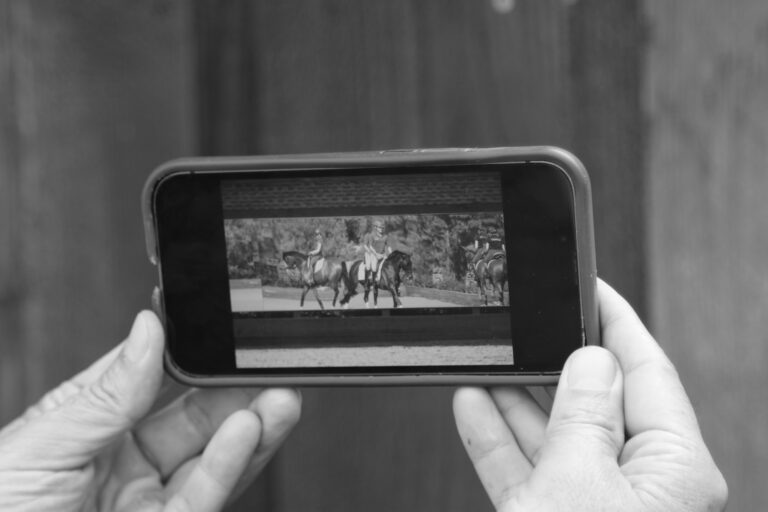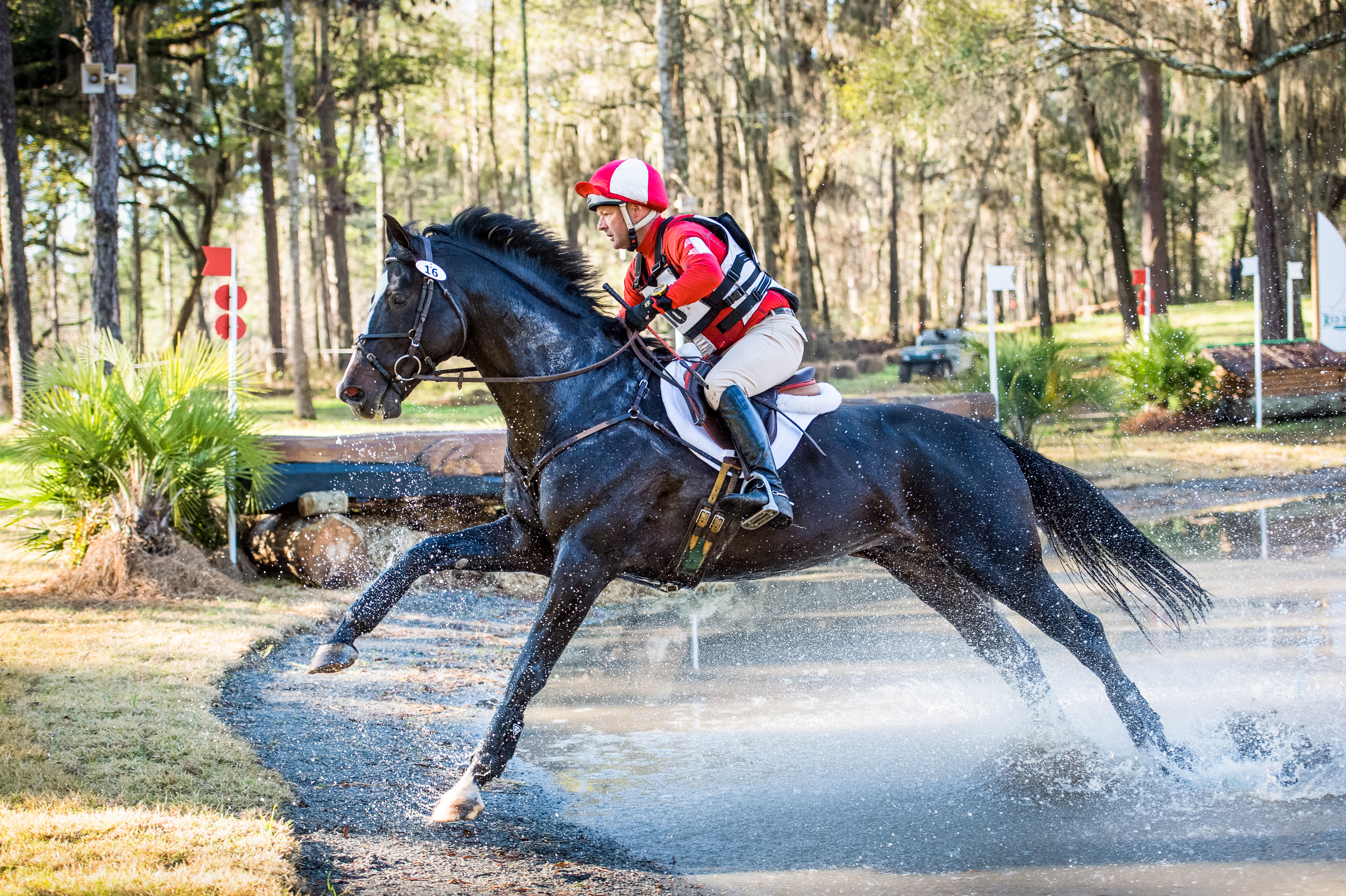
A horse’s hoof is like a human fingernail: It constantly grows. Because domesticated horses do not wear down their feet naturally like wild horses do, a professional farrier must regularly trim their hooves and, if necessary, apply shoes. The big question is: How do you know if your horse needs shoes? To answer this question, it helps to understand how the hoof functions naturally and how shoes affect those functions.
As an Amazon Associate, Practical Horseman may earn an affiliate commission when you buy through links on our site. Product links are selected by Practical Horseman editors.
Impressive, complex structures, hooves are designed to bear horses’ weight and provide for comfortable mobility. They expand and contract as they contact and leave the ground, absorbing shock and distributing the body weight evenly. The external structures also work together to provide traction and protect more sensitive internal structures. A healthy hoof, therefore, is critical to the horse’s overall soundness, comfort and usefulness. Hence the common phrase, “No hoof, no horse.”
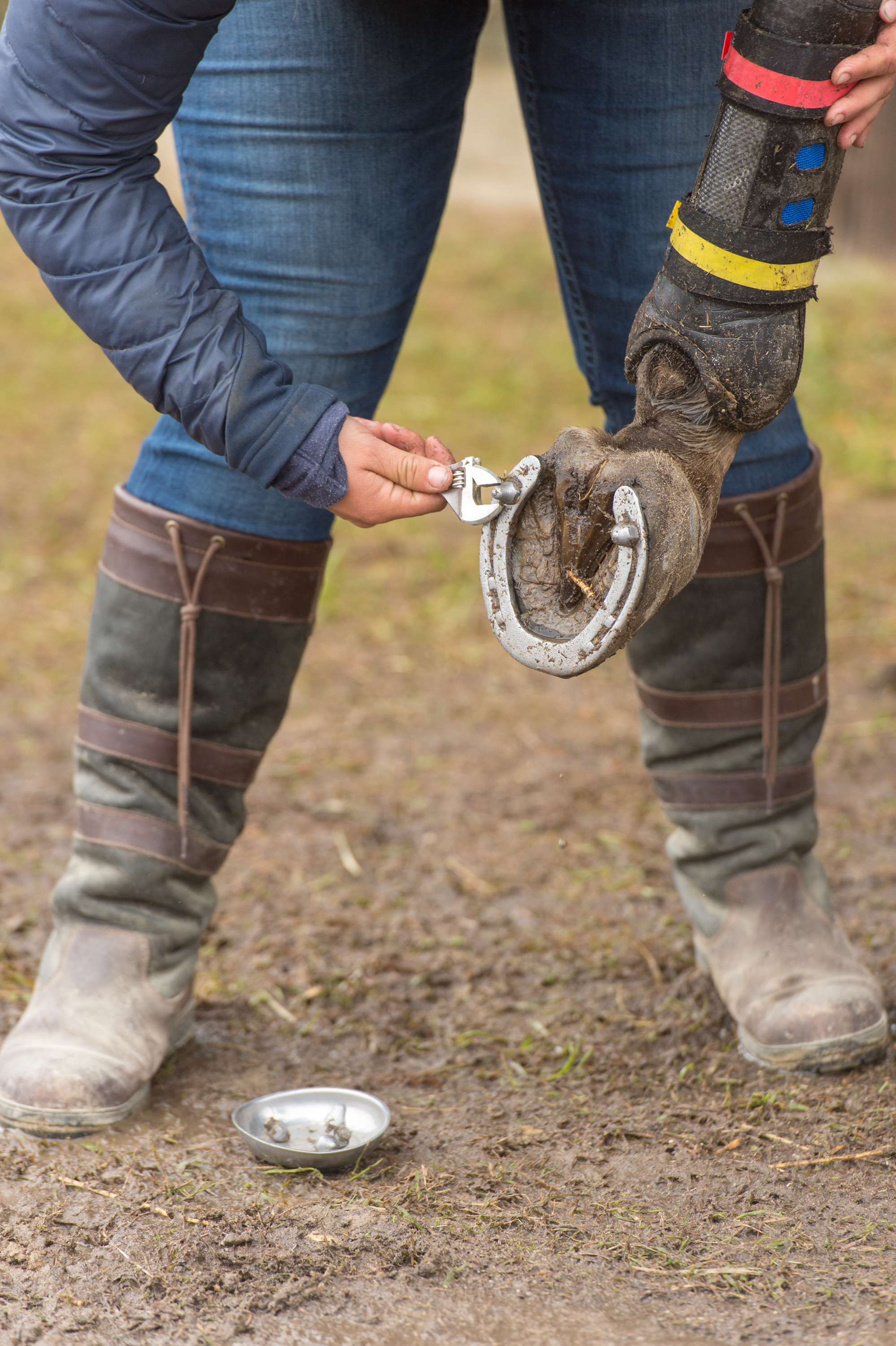
Reasons to Shoe or Not Shoe
In many cases, the hoof’s natural design provides all the protection, traction and support a horse needs, says Esco Buff, PhD, APF-I, CF, of Esco Buff’s Professional Farrier Service, LLC. Horses who are barefoot over a prolonged period of time build up their own natural protection, he says. “The hoof wall may be stronger on the bottom and will have built up a thickened sole to protect the hoof. With shoes, this is less likely to happen.”
When the unshod hoof touches the ground, it ordinarily slides slightly, reducing some of the stress on the structures higher up in the foot and leg. To keep the hoof from sliding too much, the natural concavity of the sole provides traction when it packs with dirt. Shoes lift the sole higher off the ground and can cause the foot to slide excessively. Depending on the footing, you may need to add traction devices such as studs, heel caulks, rim shoes or hard surfacing material, to make up for this. However, such added traction may interfere with the correct slide a horse has when he puts his foot down. “Everything in the farrier industry that is done to a horse has pros and cons,” Esco says. “The goal of the farrier is to find the method that will have more pros than cons and be most successful.”
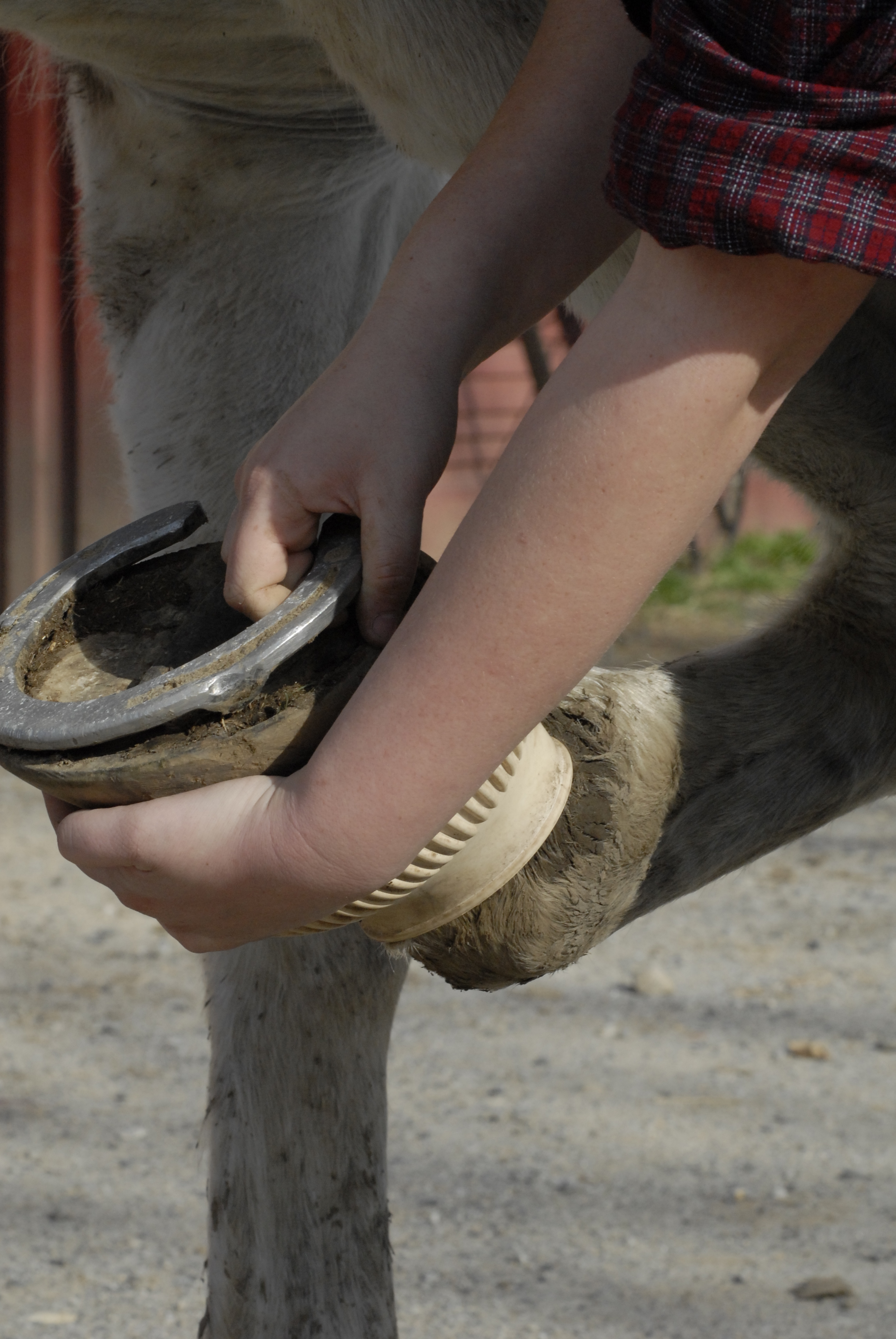
Shoeing is certainly more expensive than trimming, and there are also risks to shoeing. When nailing a shoe to the foot, there is the chance of a misplaced, or “hot,” nail causing pain and a possible abscess. If a horse “springs” or pulls a shoe off himself, he might tear up the hoof wall, strain a tendon or step on a clip, causing more damage and pain and possibly injuring internal structures, such as the coffin bone.
However, a horse may need additional support and/or protection depending on his conformation, job and the environment he’s working in. You might decide to shoe him to correct conformation faults (and thus prevent lameness), supply added protection on hard/rocky footing and/or provide additional traction.
Some horse owners feel strongly that barefoot is the only way, the “natural way.” Still others would never dream of letting a horse go without shoes, even if he didn’t necessarily need them. Esco would rather see the conversation focus not on what methods are considered the right way, but what is best for each individual horse. “A lot of times people talk about barefoot versus shod as if it’s a competition,” he says. “It’s not one or the other. It’s what’s best for the horse.”
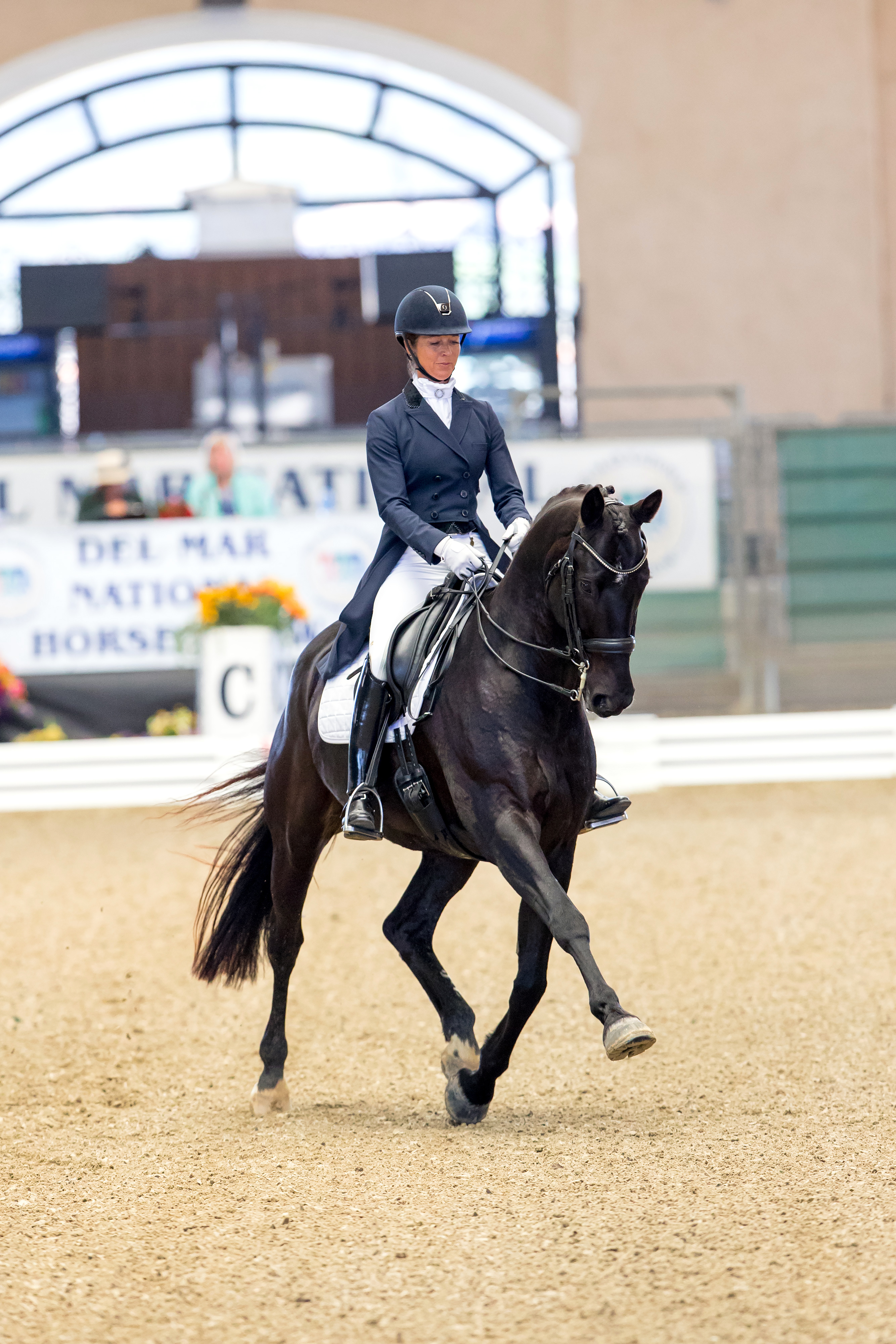
Does My Horse Need Shoes?
Deciding whether or not your horse needs shoes should come down to these key factors: protection, performance, conformation and medical conditions.
Protection
The environment a horse is living and working in impacts the necessity for shoes. Hard, stony ground can cause soreness or bruising, so many horses do better on it shod.
When conditions are only temporarily unsuitable, some riders use alternative solutions, such as hoof boots or glue-on or tape-on shoes, to protect their barefoot horses. Hoof boots are designed to provide traction, too, and well-fitted boots are generally safe for all disciplines. (If your horse is tripping, unsound or the boots are falling off, check the fit or discuss another option with your farrier).
FEI dressage rider Shannon Peters has found that her horses are sounder, healthier and suffer fewer injuries over time by not wearing shoes, but she still provides them with temporary protection when necessary. While all 12 of the horses in her barn train and compete barefoot, they wear hoof boots when hacking outside the ring. “I don’t think a boot can hide anything, but it certainly can take a little bit of concussion out of the foot,” she says. “I don’t feel any of them need a boot when they’re in the arena footing. If I take them out on rocky trails, of course, they all get protected. They may not need it, but having competition horses, I can’t risk them getting a stone bruise.”
Sometimes Shannon’s horses have glue-on shoes applied just prior to a competition. They wear them while traveling and competing, and the shoes are removed upon returning home. Her current top horse, for instance, lives outside and is used to hard ground, but he doesn’t have the best soles and needs extra protection while showing. “I can’t risk taking him to a horse show where there are rocks and concrete and some footing that is fairly hard that he’s not used to,” she says. “He went barefoot his whole young career up to Fourth Level. At home he’s barefoot, but I want to give him the best benefit of the doubt I can when going to a show. With trailering and different footing, I glue something on just to protect his foot a little bit from the unknown. They come off when he gets home.”
Performance
Depending on what you’re using your horse for, he may need shoes to optimize performance. For example, horses who work in snowy, icy conditions typically need snowball pads (they keep snow from balling up on the bottom of the feet) and studded shoes. For these particular horses, “It’s not about shock absorption; it’s about traction,” Esco says.
Horses with jobs that increase the concussion on the foot, such as high-level jumpers and eventers, may do well with shoes for increased support. Unlike dressage horses, who most often perform on groomed arena footing where they are unlikely to encounter stones or inconsistencies that could cause foot soreness and decreased performance, event horses perform on multiple types of surfaces with varying quality of footing. They often require the added protection and traction of shoes.
When four-star New Zealand eventer Joe Meyer moved to Florida, the sandy footing (compared to his previous home base in England, which was typically either very soft or very hard, depending on the time of year) led him to consider keeping some of his horses barefoot. This was not only good for the horses but also easier on the checkbook. Since then he has developed a system that works for his program: Horses with strong, healthy feet who compete at Training level and below don’t get shoes.
“The bulk of our season is done early in the winter,” he explains. “We start in January and go through to April.” Horses’ hooves grow more slowly that time of year, which means more shoeing holes close together, breaking up the hoof walls and making it difficult for the horses to hold their shoes. “We were finding that, for a lot of the horses, the shoes wouldn’t stay on that well that time of year and it was better to leave them off.”
Joe notices no decrease in performance for those horses who compete barefoot. On the contrary, they tend to have better traction on grass than those with plain shoes. “Once you start shoeing, therefore, studding may be necessary to make up the difference,” he says. For example, at a recent jump day at his farm in Florida, “We had had no rain at all. I was jumping in a field and it was slippery, but the horses without shoes were fine. The ones with shoes and no studs were slipping around a bit.”
When Joe’s event horses start moving up the levels, traveling to competitions out of state and working on varying types of footing, they typically start getting shod. His rule of thumb is front shoes for Preliminary horses and front and back shoes for Intermediate horses. “For an event horse, if you get in a situation where the ground can be less consistent—a bit hard, a bit stony—that’s probably when you should start thinking about shoes.”
There are exceptions to the rule, however. Joe had a mare, Violet Rain, who “had amazing feet and never took an unsound step.” He competed her through the Preliminary level without shoes. He rode a stallion called South Paw through Intermediate barefoot and competed another horse in grand prix show jumping barefoot.
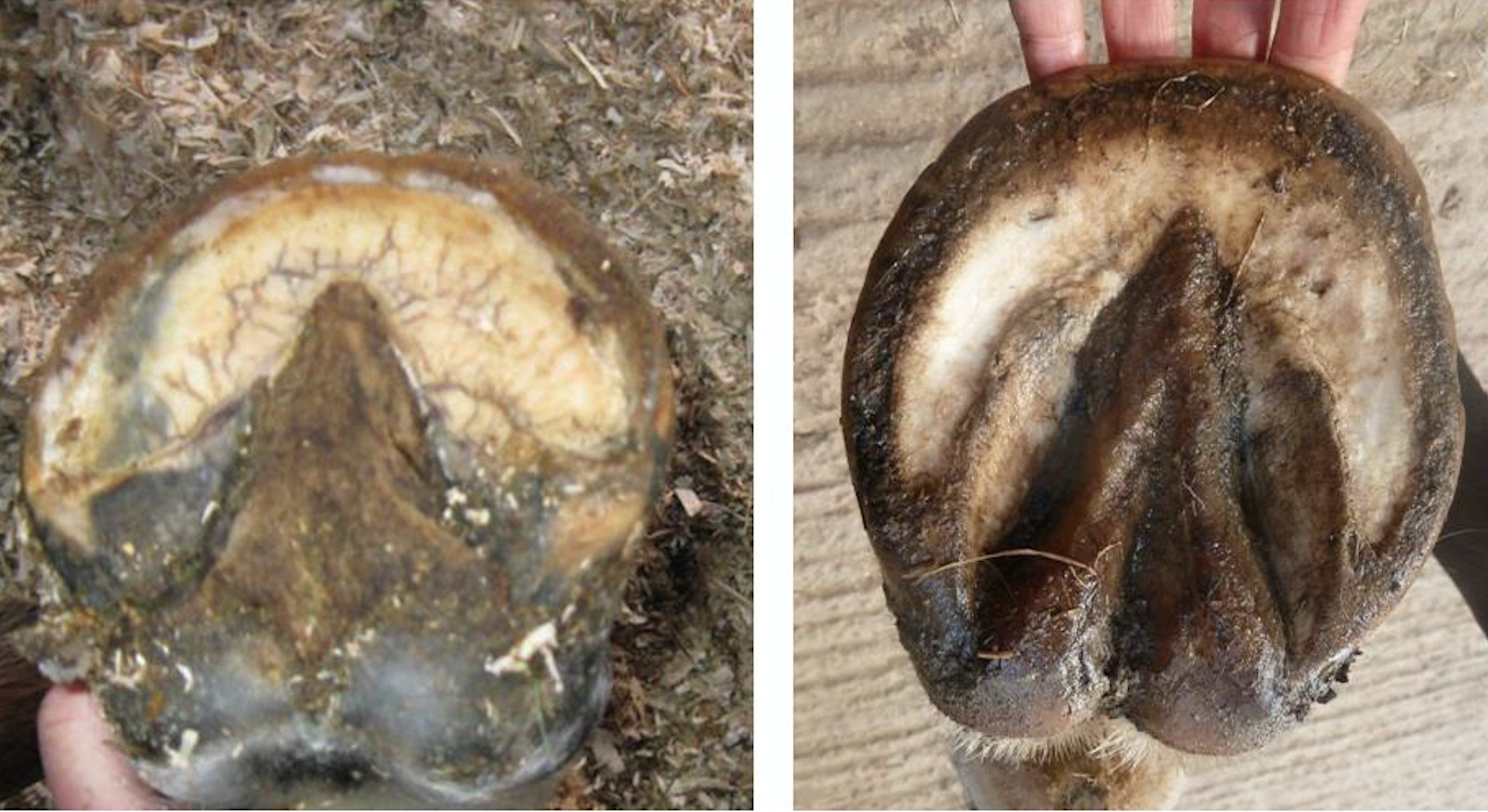
Conformation and Medical Conditions
While some horses have naturally strong, healthy feet and can go without shoes in many situations, others need additional support and won’t benefit from being barefoot. Depending on their conformation, they may need shoes to support or diminish the consequences of physical defects that cause the horse to move unnaturally or wear the hoof unevenly, such as a horse who is toed-in or toed-out. It depends on the horse’s level of activity, too, Esco explains, as an idle horse with conformation flaws may not need corrective shoeing.
Horses with arthritis or a disease such as laminitis or ringbone typically require shoes. Esco explains, “When you get into lameness issues and diseases, certain materials and types of shoes may be beneficial because the mechanical structures of the hoof aren’t intact to deal with the problem.”
Some horses have weak walls or soles that may need particular attention from the farrier. For instance, it might be difficult for a horse to hold his shoes if the walls have cracked or crumbled. The farrier may use epoxy or glue on a shoe to help with this situation.
A healthy sole is strong and hard, while a weak sole is thin and pliable. A horse with weak soles may be more susceptible to bruising and would, therefore, benefit from wearing shoes. However, there is a misconception that shoeing weakens horses’ soles over time. Esco explains, “Research has been very lacking on that. You have horses shod all their lives and they have the best soles in the world. And vice versa.”
With those barefoot horses who do build up thick soles, it is the farrier’s job not to trim all that natural protection away. However, if a horse is going to be shod, a thicker sole may need to be trimmed down to make the shoe fit properly.
For your bookshelf: The Essential Hoof Book: The Complete Modern Guide to Horse Feet – Anatomy, Care and Health, Disease Diagnosis and Treatment
Making the Transition To Barefoot
If you have consulted with your farrier and vet and determined your horse can go without shoes, be aware that it takes time and patience to acclimate a horse to going barefoot. “The farrier has to set the horse up to be barefoot, but usually a normal foot has all the ability to change and adapt,” Esco says.
Seven years ago, Shannon started taking more of her horses out of shoes. “I’ve had some go perfectly fine barefoot right out of shoes. They’re good-footed horses with good walls and good concavity,” she says. “I’ve had a couple that were not good-footed horses—and certainly not horses that most vets or farriers would say could go barefoot—who took a little more time and a little more care with booting.”
Some riders pull shoes while their horses are on a break—for example, during the off-season—to let the feet “rest.” Esco says that, in some cases, this method can do more harm than good. A horse who is usually shod may have a thinner sole than year-round barefoot horses. When you initially remove his shoes, the walls beneath the nail holes usually chip off, making it hard to reapply shoes until the old holes have grown out, usually within 12 weeks. So, depending on how long your horse’s break is, Esco says, you may be better off leaving him barefoot year-round—or skipping the barefoot period altogether and continuing to trim and shoe him the same way.
Joe considers how long a horse’s holiday will be before pulling shoes: “If they get a long holiday (six weeks or more), they get shoes off because, by the time the nail holes have grown out, you can put a shoe back on. But if the horse only has a really small amount of time off, I’ll leave them on—especially the fronts—because I don’t want them to break away at the nail holes and have nothing to nail to.”
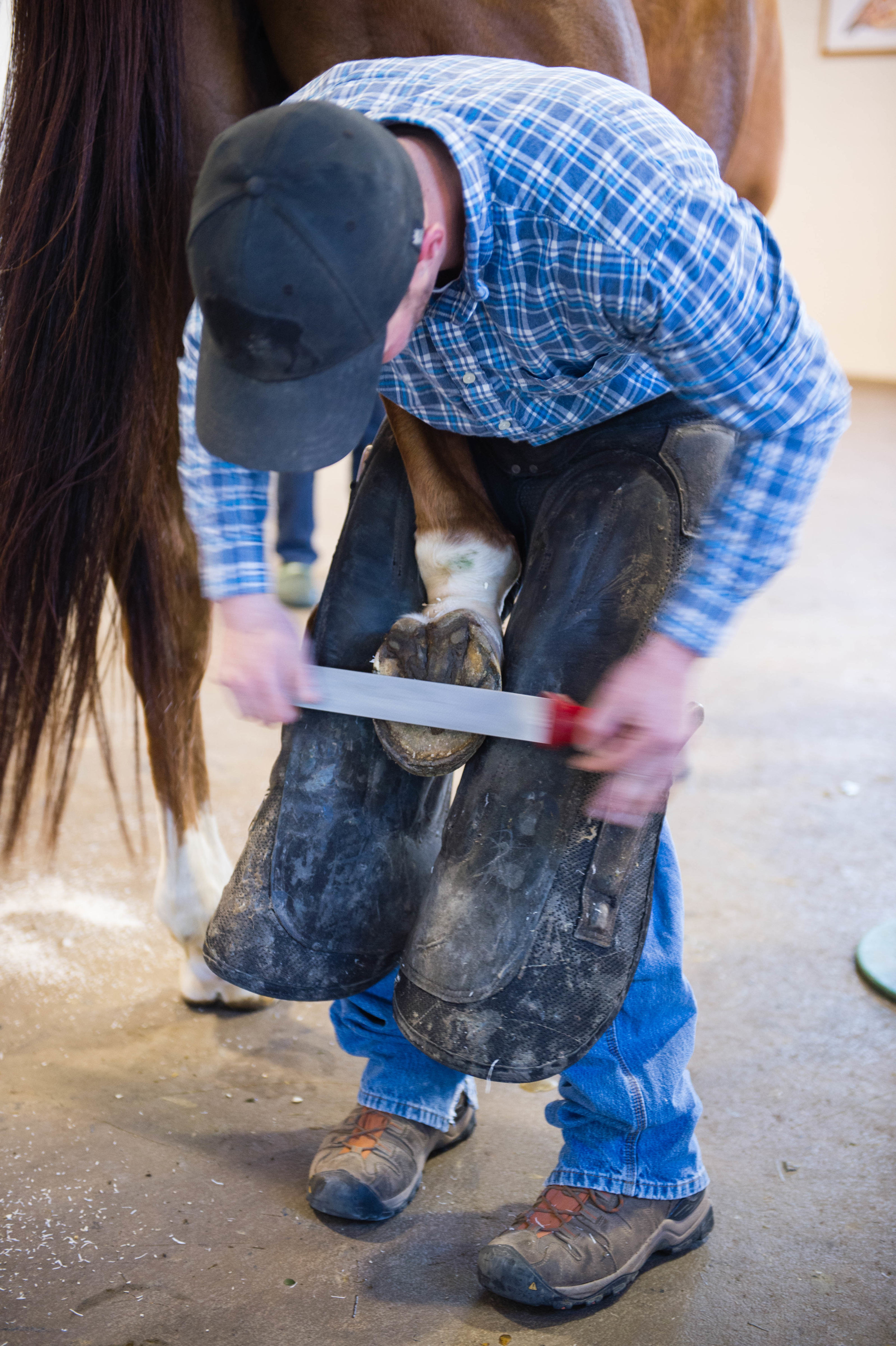
The Critical Factor
Whether you choose barefoot or shod, the biggest risk is not providing your horse with proper, regular farrier care. This is critical to ensure that your horse has correct angles and a well-balanced foot. Incorrect trimming or shoeing can cause serious damage over time. Esco believes that two of the most common mistakes are: 1) not properly balancing the hoof with the body of the horse, and 2) not correctly treating horses with long toes and low heels.
Just like shod horses, barefoot horses should be trimmed every four to six weeks. “You have to have a good trimmer who knows how to balance the foot and support that horse into having a better foot,” says Shannon. “It certainly is worth the time and effort.”
Whether choosing barefoot or shod, ultimately every horse owner and farrier has the same goal: a sound horse. At the end of the day, it’s not about whether shoes or no shoes is better or right. What is most important is evaluating and reevaluating your horse regularly to determine what care his feet need. “It’s like fine-tuning a radio every time,” Esco says. “Don’t get caught in conventional thinking. Challenge it and do what’s best for the horse.”
Find a Qualified Farrier
Esco Buff, an accredited professional farrier with both the American Association of Professional Farriers and the American Farrier’s Association, believes that every farrier, regardless of his or her specialty, should know how to do balanced trims, regular nailed shoes and glue-on or tape-on shoes, which don’t require nails driven into the horse’s hoof. Several of his own interns want to be farriers who only trim hooves, but they have the knowledge to make an educated evaluation of an animal and determine whether he needs shoes. If they can’t do the job themselves, they refer the horse to someone
who can.
Online resources can help you find a farrier in your area to trim or shoe your horse correctly. The American Farriers Association (american farriers.org) has a directory of members by state. The American Association of Professional Farriers (professionalfarriers.com) does as well, and also shows how many continuing education credits each member has earned each year.
Price often becomes a determining factor when selecting a farrier. However, when it comes to shoeing and balancing a foot properly, quality of work should be a priority. How does an owner know better? The answer is to do the research and ask questions. “As a consumer, know how to evaluate balance and a trim or shoe job,” Esco says. “Find a credible farrier willing to teach you those things and have educated discussions instead of being defensive. Every one of my horse customers checks my balance when I’m done.”
This article was originally published in the August 2018 issue of Practical Horseman.





